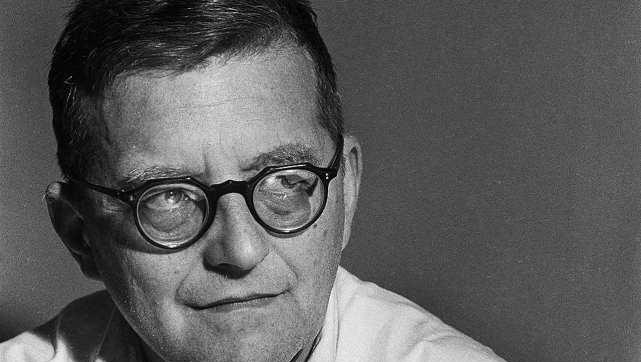(Vientiane History Special Author: Tao Sheng)
Shostakovich: The "Beethoven" of the Soviet Union, a musical prodigy who is both traditional and trendy

Shostakovich was born in St. Petersburg on September 25, 1906. He began studying piano and composition at the age of 9, tried to write opera at the age of 12, and entered the St. Petersburg Conservatory at the age of 13. There, he received the weight of the older generation of composers, Glazunov, and systematically studied piano and composition.
In 1923 (at the age of 17), Shostakovich completed his studies in piano. In 1925 (at the age of 19), he completed his composition studies and graduated with the First Symphony. In 1926, the First Symphony was performed in Leningrad with great success, and the young composer immediately attracted attention at home and abroad.
Since then, Shostakovich has devoted himself to his composing career. He composed the Second Symphony and the Third Symphony, which reflected the October Revolution and May Day, but the response was not very good.
(Shostakovich in his youth)
Shostakovich was later employed at the Leningrad Workers' Youth Theater and composed a large number of theatrical music, film scores, orchestral suites, dance plays, etc. Three of the ballets "The Golden Age" (1929-1930), "Screw Bolts" (1930-1931) and "Clear Streams" (1934-1935) are representative works of his period.
Shostakovich's courage to experiment, the novelty of composition, and the unconventionality of the composition are impressive. In 1934 (at the age of 28), his opera Lady Macbeth of Mchansk County was a great success. The opera was performed 3 times in Leningrad and 9 in Moscow, and the opera was fully booked and well received. Shostakovich, who was less than 30 years old, began to enjoy fame in the Soviet Union. But the overly trendy way of composing the work has also attracted criticism and is considered to be full of chaos.
(Shostakovich in the making)
This led Shostakovich to adjust his style of composition, writing the Fifth Symphony in 1937 (at the age of 31). This work has greatly reduced the previous more innovative creative methods and adopted a traditional approach. On November 21, the work premiered in Leningrad and received great acclaim, after which the audience applauded for half an hour. This work later became his most frequently played symphony. After that, he taught at the Leningrad Conservatory and gradually established himself as the leader of the Soviet music scene.
In 1941 (at the age of 35), Nazi Germany invaded the Soviet Union and Leningrad was besieged. In the midst of the war, Shostakovich composed the Seventh Symphony (also known as the Leningrad Symphony). This grand 75-minute piece of music, which was well received after its premiere, became a "symbol of resistance to the Nazis", and immediately toured to Europe, the United States and other places, and became famous all over the world.
(Shostakovich, who appeared in Time magazine)
In 1945, on the occasion of the founding of the United Nations, U.S. President Franklin D. Roosevelt proposed shostakovich's "Song of Encounter" as the tune of the United Nations Song. In the decades that followed, this high melody resounded in every country of the world, representing a peaceful and free United Nations.
In 1948, the Soviet Union criticized some of the tendencies in music composition to detach from the masses, and Shostakovich was also named. After that, he tried to create some simple works that were easy for the audience to accept. Such as the oratorio "Song of the Forest" (1949), Cantata "The Sun Shines on Our Motherland" (1952). But he did not want to give up his artistic concept, and still carried out more complex and abstract music creation. The Violin Concerto No. 1 (1948) and the Fourth String Quartet (1949) are such works.
In 1953 (at the age of 47), Shostakovich composed the Tenth Symphony. Small fragments of his name appear repeatedly in the work, called "dsch motives". This symphony has also become his most classic masterpiece.
(Album cover of Symphony No. 10)
In 1957, Shostakovich was awarded the Lenin Medal. He also composed the Eleventh Symphony for the 40th anniversary of the October Revolution that year. In 1958, he composed more than a dozen string quartets, and his position in the music industry was further enhanced. In 1963 (at the age of 57), "Lady Macbeth of Mchinsk County" was re-staged. In 1966, he was awarded the title of "Hero of Socialist Labor", the first time anyone in the music industry had received this award.
On August 9, 1975, Shostakovich died at the age of 59 after completing the 15th Symphony and the 15th String Quartet. After his death, he was hailed as "one of the greatest composers of the 20th century", "Beethoven of the 20th century"!
(The 778th work of the Vientiane History and Biography Writing Camp, and the 92nd work of camper "Tao Sheng")